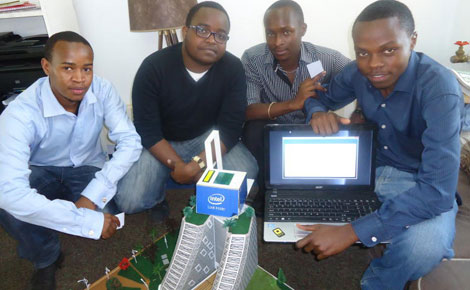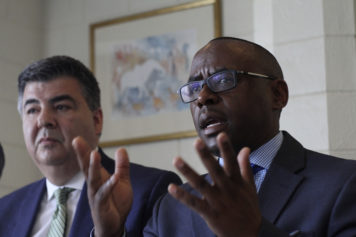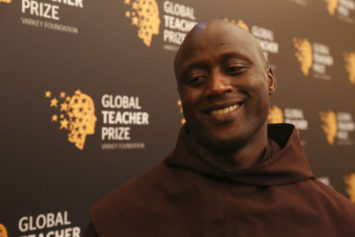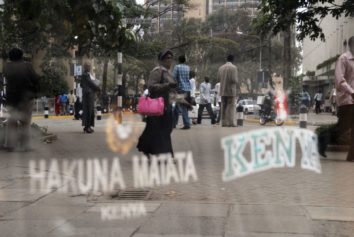
Michael Mumo, 21, Emmanuel Kinyanjui, 20, James Kimani, 22, and Iyan Bett, 22, are the creators of a new security system that can be used to identify everyone who enters a building using near field communication (NFC) technology. The system uses contactless technology that can also be used to automatically control the number of people who access public places. Once Kenya shifts to using an ID card, the young inventors say the system will work even better.
“The system involves a server–we are currently using a laptop–which records all details, including ID number, time and date of entry after you tap your ID on the reader module that will be placed at the entrance of public buildings,” said Kinyanjui to Standard Media.
“With this, we shall be able to know who went where and at what time, helping security organs with intelligence gathering,” said Kimani.
The idea for this security system came about when they were all watching the news, and people were being arrested for interrogation at the scene of a crime while the police looked for suspects.
“With our system, it will be easier to identify suspects since the data at the central server will reveal who was at the scene if a crime happens in or near a building with our system at the entrance,” said Mumo. “The police will only be required to retrieve data from the servers, call the individuals in for questioning or track them down instead of arresting several hundred innocent passers-by.”
This new security system will not infringe on Kenya’s privacy policy.
“We will not be interfering with your right to privacy, but will touch on it a bit to ensure the security of the country,” said Bett.
Recently, the students’ system won the Intel Galileo competition, which brought 113 participants from three universities.


